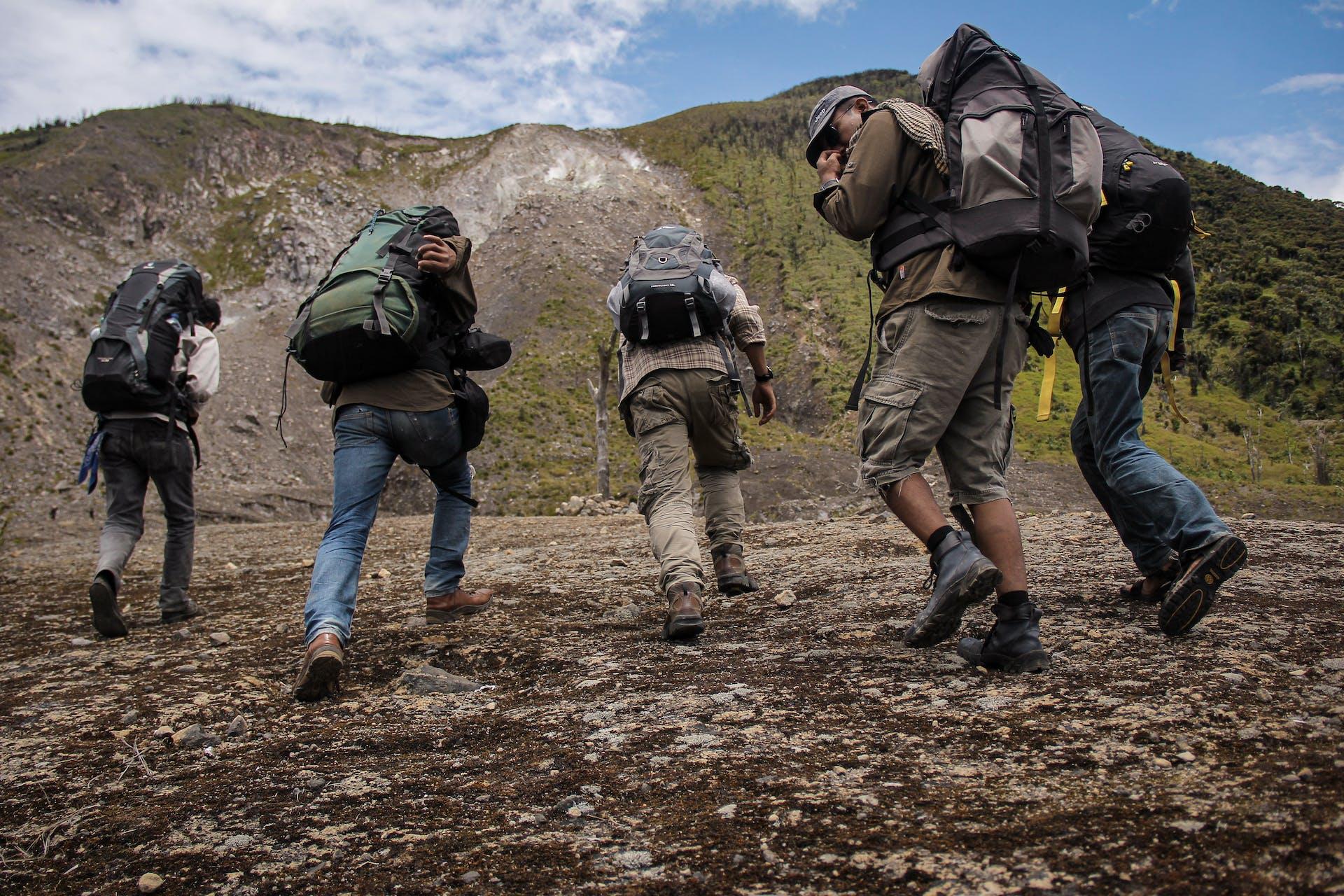When the need is greatest
Some weeks ago, I arrived in Bruges after a long car ride. My body signaled me to urgently seek a restroom. The train station was the first place I came across where I could go. To do so, I had to pay 50 cents. However, I have not had cash on me for a long time and there was no other option to pay. So I speak to a group of young people standing in the entrance hall.
"Can I borrow 50 cents from someone and then pay back via cell phone?" 3 of the 4 youths immediately empty their pockets to give me money. "No way, you don't have to pay it back. Just take it”, one of them says.
I am so pleasantly surprised that I ask if I can take a picture of them and write something about it. They are beaming. My day in Bruges couldn't have gone wrong, even though it was raining cats and dogs then.

A few days later, I hear Paul Verhaeghe on the radio on the programme Touché. He talks about the unease growing among people. "We no longer feel connected and see each other as competitors," he says. I am still floating slightly from my experience in Bruges and silently land on the ground. Whew, that's a tough message. Is it really so then?
Looking at my experiences in traffic, I do recognise that sense of competition. I see cars driving through orange and red lights, I see cars parked on pavements that cyclists and pedestrians can't pass, I see cars crossing full white lines to avoid having to queue in their traffic jams. And I hold my heart because I see the danger this often poses to others. Don't we feel responsible for each other (anymore)? Or in solidarity with each other? And why is that?
According to The American philosopher Robert Goodin, from an ethical point of view, as a human being you continuously bear an unlimited amount of responsibilities towards almost everyone. Only no one can maintain this, let alone live up to it. Meanwhile, our world has become so large and diverse that we tend to limit our responsibilities to those individuals or groups with whom we feel connected. That is how group solidarity or interest solidarity arises. We feel responsible for and in solidarity with someone with whom we share a "commonality". (1)
Last weekend, I attended a mountain hiking techniques workshop in the Ardennes. In a group where most people had never seen each other before. Some had a fear of steep descents, others (including me) wanted to learn how to ascend without reaching the top with their tongues on their toes. We watched each other's exercises, we experimented, each on our own, and gave each other spontaneous feedback. Everyone was there to learn something and it was precisely because of this that something was created together. It should really be that easy when colleagues give each other feedback at work. Unfortunately, reality is often different.

The paradox of working together
I am coaching several teams. Teams that have thinned out due to the changing context and circumstances, or have just become larger, or have completely changed in composition. The question for the coach is always the same: how do we get the (new) team back on track? How do we find the collectivity we need to really connect and feel responsible for each other? Because then a team really achieves top performance. It demands something of a person, continuously adapting to the context, the requirements and expectations. After all, every change creates a hole in the network of relationships and creates new dynamics. And in the midst of those changing interactions, each individual then seeks his or her place and wants to accomplish the things that are important to him or her.
Collaboration thus has a paradoxical nature. On the one hand, there is the need to belong to a group and find a piece of togetherness; on the other hand, we also want to make our own contribution and thereby distinguish ourselves. Manfred Kets de Vries calls this the "hedgehog effect": we seek warmth from each other, but if we get too close, we hurt ourselves on the spines. And even though we know it, we keep doing this anyway. Just like hedgehogs when it gets colder seek each other out again to get warm. The need for connectedness always alternates with the urge for individuality. One cannot exist without the other.
So if we want to cooperate well or also live together, we must find an answer to the question: how do we create space for the individual drive and still ensure collective bonding? This requires by all means different, dynamic forms of cooperation and team structures than we are used to.

The potential of collaboration
Here are some facts known from recent research on how teams work. (2)
- 85% of our time is spent collaborating.
- On average, a professional in a large organization works in 8 teams at the same time.
- Working in teams leads to an average efficiency loss of 25%. As teams get larger, that loss increases to 75%.
- 80% of teams fail to meet expectations.
- 66% of teams fail to come up with better ideas and make better decisions than the best team member could do alone.
So not exactly a plea for (large) teams. At the same time, you can also see it as an invitation to address the untapped potential in a group. What is the best way to do that? What do you have to do to make that potential pay off? And then there's also the individual ambition that you want to give space to, so you don't get bothered by spines....
Roberto Martinez once said at the start of his career as national coach of the Red Devils, "I have a team full of stars and now I want a star team." The statement is nice because it refers to the unexplored collective aspect. After all, that is where the essence of cooperation lies. How do we use all the potential and ensure that the whole becomes more than just the sum of its parts?
I don't know much about football, but I can see what Martinez did with the team in the early years. He created the right conditions under which collective thinking and action could emerge. In his book "Leading Teams," Hackman gives three key conditions for turning a group into an effective collective:
- Team members must know each other from the start. They know each other's talents and issues of concern. There are no hidden agendas and non-transparent group norms.
- Team members must have a collective agenda, a clear direction. I mentioned collectivity here earlier. It must be clear to each team member what the goal of the team is and what they want to accomplish together. Individual ambitions are also clear and come together in a team ambition.
- Successful teams have (expert) coaching that is strongly focused on the team process.
Of course, the type of leadership is very important here. The challenge is to find a good balance between autonomy for the individual and connection for the collective. A top team really does not arise by itself, it requires solid guidance and support, especially in the initial phases of establishing trust and engaging in constructive conflict.

Is there a magic formula?
Research shows that there is indeed a link between the characteristics of a top team and performance.
Eric Koenen summarizes the essentials in his book "Smart Together."
- There is a foundation of psychological safety and mutual trust and connection. People choose each other, even if someone else or chance brought them together. Individual differences and shadows are allowed to be there and accepted. There is trust in your competencies and confidence in you as a person.
- Just because there is trust, team members engage in constructive confrontation. Team members dare to openly discuss different views.
- When a direction is chosen, there is a high probability of real commitment. Just because of that openness. Everyone can tell what that direction means to him or her.
- When commitment is explicitly expressed, team members are more approachable and there is a continuous exchange of information and feedback in the team.
All of the above actions lead to results. That collaborative process is regularly discussed and adjusted.
Cooperation pays off if there is also collaboration
Executives often think that if they have good people "on the bus," good cooperation and top results will come naturally. In a context where everything is constantly changing, however, this is no longer evident. After all, change focuses an individual on himself. If we want top teams, we must look at how the people on the bus cooperate with each other. Tapping into the maximum potential of a group thus requires some direction.
Teaming is an important aspect of this. The term was introduced and researched by Amy Edmondson, Harvard professor. She describes it as "better utilization and optimization of the thinking and doing power of a group", at any time and regardless of the composition of the group. That is, working together as effectively as possible on a task as a team.
Two factors are important in this. They confirm what we talked about earlier.
- How secure do the members perceive the group to be? A group only reaches peak performance when members learn from each other and with each other. That correlation between psychological safety, performance and learning has been demonstrated many times.
- How strongly does each member take leadership? Do members take responsibility for the common mission or a particular part of it? And what of their individual ambition can they put into that common mission?
15 team members, that's 105 relationships
Tomorrow I take the next step with a group of colleagues. Creating the context so that we can blow away the noise on communication. What do you expect, a team with 15 people, that's 105 connections you maintain. Something sometimes escapes your attention. Especially if you are working in three different places. Getting the space to say something and feeling safe doing so is crucial here. Because even though the group members know each other, there is a lot that goes unsaid. After all, after years of working together, the relationship becomes more important than the task.
So we slow down with the group, pay attention to that which demands attention. Even if it is not always visible on the surface.
Would you like to know how that can happen? Then let's team up and learn from each other. Welcome!
My sources of inspiration
(1) “Samen slim, hoe collectieve intelligentie ons gaat redden”
Eric Koenen
(2) “Teaming, de nieuwe realiteit van samenwerken”
Hans van der Loo en Patrick Davidson
